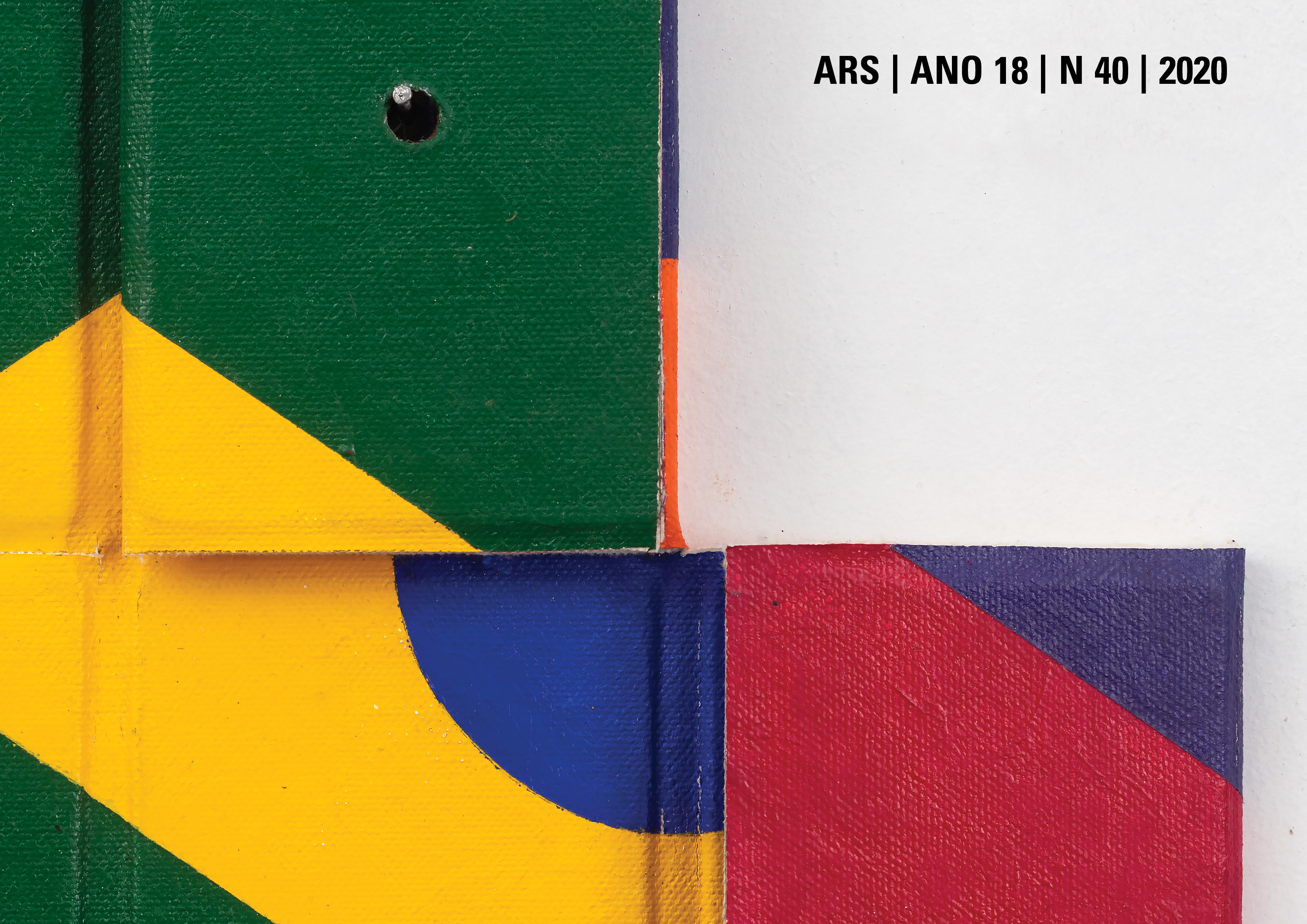Time Images in Bill Viola: Existential Queries towards Nothingness
DOI:
https://doi.org/10.11606/issn.2178-0447.ars.2020.165591Keywords:
Bill Viola, Martin Heidegger, Keiji Nishitani, Finitude, NothingnessAbstract
In this article, we propose an interpretative analysis of selected works by the American artist Bill Viola (b. 1951), aiming at the characterization of time images that have a political dimension resistant to rapid obsolescence and late capitalism. Especially, we seek to show that, through his works, Viola evokes anguish in the face of finitude; therefore, his time images query us towards the nothingness of existence. Following this interpretative line, we propose an approximation of his poetics to aspects of the philosophy of Martin Heidegger, mainly the concept of “being-toward-death”, and of Keiji Nishitani, with the notion of “field of emptiness”, as well as mobilize some considerations from Gilles Deleuze, Shuichi Kato, John Hanhardt, and Elizabeth ten Grotenhuis.
Downloads
References
ALMEIDA, Fernanda Albuquerque de. Imagens de tempo nas poéticas tecnológicas de Harun Farocki, Bill Viola e Anthony McCall. 2019. Tese (Doutorado em Estética e História da Arte). Programa de Pós-Graduação
Interunidades em Estética e História da Arte, Universidade de São Paulo, São Paulo, 2019.
DALLMAYR, Fred. Nothingness and Sunyata: A Comparison of Heidegger and Nishitani. Philosophy East and West, n. 42, University of Hawai’i Press, 1992, pp. 37-48.
DELEUZE, Gilles. Cinema 1. A imagem-movimento. (1983). São Paulo: Editora Brasiliense, 1985.
DELEUZE, Gilles. Cinema 2. A imagem-tempo. (1985). São Paulo: Editora Brasiliense, 2013.
DUBOIS, Philippe. Cinema, vídeo, Godard. São Paulo: Cosac Naify, 2004.
FLORENTINO NETO, Antonio. Recepção e diálogo: Heidegger e a filosofia japonesa contemporânea. Natureza Humana, 10(1), 2008, pp. 147-160.
GROTENHUIS, Elizabeth Ten. Something Rich and Strange: Bill Viola’s Uses of Asian Spirituality. In: TOWNSEND, Chris. The Art of Bill Viola. London: Thames & Hudson, 2004, pp. 160-179.
HANHARDT, John G. Bill Viola. (2015). / Kira Perov (ed.). São Paulo: Sesc Edições, 2018.
HEIDEGGER, Martin. Que é metafísica? In HEIDEGGER, Martin. Conferências e escritos filosóficos. São Paulo: Nova Cultural, 1999, pp. 223-261.
HEIDEGGER, Martin. De uma conversa sobre a linguagem entre um japonês e
um pensador. (1953-1954). In HEIDEGGER, Martin. A caminho da linguagem.
Petrópolis, RJ: Vozes; Bragança Paulista, SP: Editora Universitária São Francisco, 2008a, pp. 71-120.
HEIDEGGER, Martin. A questão da técnica. In HEIDEGGER, Martin. Ensaios e conferências. (1949). Petrópolis: Vozes; Bragança Paulista: Editora Universitária São Francisco, 2008b, pp. 11-38.
HEIDEGGER, Martin. Ser e tempo. (1927). Campinas: Editora da Unicamp; Rio de Janeiro: Vozes, 2012.
HEINE, Steven. Philosophy for an ‘Age of Death’: The Critique of Science and Technology in Heidegger and Nishitani. Philosophy East and West, n. 40, University of Hawai’i Press, 1990, pp. 175-191.
KATO, Shuichi. Tempo e espaço na cultura japonesa. (2007). São Paulo: Estação Liberdade, 2012.
MARRA, Michael. Modern Japanese Aesthetics: A Reader. Honolulu: University of Hawai’i Press, 1999.
MATSUMARU, Hisao. O pensamento de Nishitani e o Budismo. In NETO, Antonio Florentino; JR. Oswaldo Giacoia. Budismo e filosofia em diálogo. Campinas, SP: Editora Phi, 2014, pp. 11-37.
MICHELAZZO, José Carlos. Ser e Sunyata: os caminhos ocidental e oriental para a ultrapassagem do caráter objetificante do pensamento. In: LOPARIC, Zeljko. (Org.) A Escola de Kyoto e o perigo da técnica. Campinas: DWW Editorial, 2008, pp. 75-96.
NISHIDA, Kitaro. Ensaio sobre o bem. (1911). Campinas: Editora Phi, 2016.
NISHITANI, Kenji. Religion and Nothingness. Los Angeles: University of California Press, 1983.
SAKAI, Kazuya. O teatro Nô. (1968). Afro-Ásia, n. 10-11, 1970, pp. 137-157.
VIOLA, Bill. O som da linha de varredura. (1995). Cadernos de subjetividade, n. 11, 2003, pp. 53-70.
WERLE, Marco Aurélio. A angústia, a morte e o nada em Heidegger. Trans/Form/Ação, n. 26, 2003, pp. 97-113.
FILMES
KIDEL, Mark. Bill Viola: The Eye of the Heart. BBC, 2003, 59’06”.
Downloads
Published
Issue
Section
License
Copyright (c) 2020 Fernanda Albuquerque de Almeida

This work is licensed under a Creative Commons Attribution-NonCommercial 4.0 International License.
The responsibility for obtaining written permission to use in the articles materials protected by copyright law lies entirely with the author(s). Ars is not responsible for copyright breaches made by its collaborators.
The authors have the copyrights and grant the journal the right of the first publication, with the article licensed under the Creative Commons BY-CC License.
Licensees have the right to copy, distribute, display, and carry out the work and make derivative works from it, including with commercial purposes, granted that they give the due credit to the author or licensor, as specified by them.
Licensees compromise to inform the appropriate credit, provide a link to the license, and indicate if changes were made.
Respected the terms of the license, the licensors/authors are not allowed to revoke the conditions above mentioned.
After the publication of the articles, the authors keep the copyrights and the rights to republish the text exclusively in unpublished books and collections.


